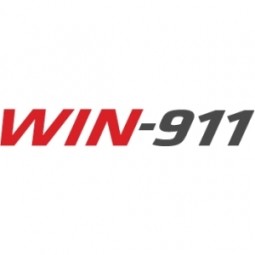下载PDF
WEST TEXAS GAS TRUSTS WIN-911 ALARM NOTIFICATION SOFTWARE

技术
- 自动化与控制 - 监督控制和数据采集 (SCADA)
- 功能应用 - 远程监控系统
适用行业
- 石油和天然气
适用功能
- 商业运营
用例
- 现场人员安全管理
挑战
很明显,SCADA 系统并不是监测现场站的可靠方法。系统有时会失去与主机的连接。这导致人员对警报的响应延迟,并增加了在实施纠正措施之前未收到严重警告的风险。作为预防措施,必须对警报点进行目视监控,如果警报响起,则需要工作人员呼叫适当的人员。制定了及时报告的规定。 West Texas Gas 的管理层很快确定需要安装二级警报支持系统。他们正在寻找能够监控来自 OPC 服务器的变量标签以及监控内置于现有 SV32 SCADA 系统中的自定义标签以观察和报告耀斑量的东西。
客户
西德克萨斯天然气
关于客户
West Texas Gas 拥有并经营超过 5,000 英里的天然气配送干线,为德克萨斯州和俄克拉荷马州的数千名客户提供服务。
解决方案
寻找解决方案的时间很短。 WIN-911 警报通知软件已经被公司内的其他设施使用,包括他们的环境部门,并强烈推荐。 WIN-911 作为视觉 SCADA 警报的备份,通过提供辅助通知系统,在出现问题时向现场人员发出警报。系统通过 OPC 服务器自动监控报警点,并通过电子邮件 24/7 全天候通知待命人员。
运营影响
数量效益
相关案例.

Case Study
Taking Oil and Gas Exploration to the Next Level
DownUnder GeoSolutions (DUG) wanted to increase computing performance by 5 to 10 times to improve seismic processing. The solution must build on current architecture software investments without sacrificing existing software and scale computing without scaling IT infrastructure costs.

Case Study
Remote Wellhead Monitoring
Each wellhead was equipped with various sensors and meters that needed to be monitored and controlled from a central HMI, often miles away from the assets in the field. Redundant solar and wind generators were installed at each wellhead to support the electrical needs of the pumpstations, temperature meters, cameras, and cellular modules. In addition to asset management and remote control capabilities, data logging for remote surveillance and alarm notifications was a key demand from the customer. Terra Ferma’s solution needed to be power efficient, reliable, and capable of supporting high-bandwidth data-feeds. They needed a multi-link cellular connection to a central server that sustained reliable and redundant monitoring and control of flow meters, temperature sensors, power supply, and event-logging; including video and image files. This open-standard network needed to interface with the existing SCADA and proprietary network management software.

Case Study
Refinery Saves Over $700,000 with Smart Wireless
One of the largest petroleum refineries in the world is equipped to refine various types of crude oil and manufacture various grades of fuel from motor gasoline to Aviation Turbine Fuel. Due to wear and tear, eight hydrogen valves in each refinery were leaking, and each cost $1800 per ton of hydrogen vented. The plant also had leakage on nearly 30 flare control hydrocarbon valves. The refinery wanted a continuous, online monitoring system that could catch leaks early, minimize hydrogen and hydrocarbon production losses, and improve safety for maintenance.








